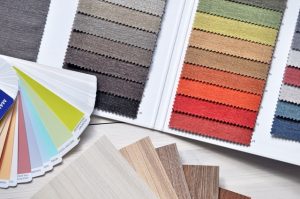9 Things to Know About Becoming an Interior Designer
Are you constantly receiving compliments on your hotel interior design choice of colours or on your residential interior design preferences for how they are different? Do you enjoy decorating rooms and rearranging furniture? If you answered yes to these questions, then perhaps a career in interior design is perfect for you. Before making a life-altering career choice, there are a few things you need to know about the design world. Interior designers face challenges daily; some may not interest you, while others might provoke and open doors to a career you never thought possible. Read on to discover the 9 things you should know before becoming an interior designer.
You Need to Have a Knack for Interior Design
It may seem obvious, but so as to become an interior designer, you want to have an innate flair for colour, spatial arrangements, design and textiles. Do you enjoy decorating your house and get plenty of compliments on your decoration? That does not necessarily mean that you ought to be an interior designer, but it is definitely a good sign. Always follow your heart, and if you believe that a career in interior design is right for you, then go for it and work hard to be the best.

Interior Design Is Complex
While fabrics, furniture, and colour may play a huge role in interior design, especially for the coastal style, there are loads of other tasks that are required of interior designers — a lot of which might appear less fun and more like work.
Interior designers will need to be educated in the history of style, the structural integrity of buildings, building codes, ergonomics, spatial concepts, ethics, psychology, computer-aided design (CAD) and a whole lot more.
The broad selection of skills is required because designers work with not only homeowners, but also architects, contractors, government agencies and business management specialists .
The Salary Is Not as High as You Think
The salary depends on many factors, including level of education, location, work experience and size of the business. An interior designer in a coastal furniture company will almost certainly make less than a designer who works for a luxury architectural firm.
You Will Need to Be a People Person
Individuals are finicky, especially in regards to their homes. Although some customers have clear goals in mind, others might think that they know what they want, only to discover that they despise the final product and are unsatisfied with your work.
A successful interior designer is a people pleaser and a moderator (and occasionally a mind reader) — someone who can steer customers toward a positive outcome when making them feel like they’re in complete control of the choices. Interior designers are constantly balancing their design choices and their customers’ desires.
You Will Need to Develop a Portfolio
A picture can speak volumes about your quality of work. You can talk all day long about colours and fabrics, but unless you’ve got an outstanding portfolio that showcases your layouts and projects, your successes will be few and far between.
If you are just coming out of college and are new to the job market, you could be required to offer your services at no cost or at a reduced rate. Perhaps this is the best way to get a portfolio started; it is also a wonderful way to get to know local merchandisers and suppliers and develop a rapport for future endeavours.
Everybody begins at the bottom. With some effort, expertise and proper marketing, you can become a thriving force in the interior design area.
Competition Is Fierce in Interior Design
Interior design is a competitive business. The trick to success is getting yourself noticed. As stated earlier, a wonderful designer portfolio will surely help you land jobs.
Another important element is getting an extensive education. It is important to remain abreast of style trends by studying design books and attending industry events. When competition is high, you want to work hard to be able to get noticed and rise to the top.
Virtual Designers Have an Opportunity
When folks hire an interior decorating company, they might not understand that they can actually hire from anywhere in the world. Yes, designers can telecommute, too! Because of technological innovations such as design and Skype applications, designers are finding a whole new world of digital design.
Although many free online virtual room design tools accessible to the general public, interior designers have an edge on this competition as a result of their private relationships with elite layout lines. Several high-end textile businesses offer discounts to designers working in the market, thereby letting them receive their clients the lowest prices.
Interior Designers Need to be up to Date with Legislation
Some of the details can surely be dull, but they require knowledge from interior designers. Learning about plumbing codes, power, and load-bearing walls might not excite you, but it’s required. Staying abreast of these things gives interior designers an edge and marketability which decorators simply don’t have.
It’s Not About Your Style, It Is About Theirs
While designers can offer their customers a broad array of design styles to pick from, it’s important to not forget that it’s up to the customers to select what style suits them best.
Just because designers are educated and have great taste doesn’t make their choices superior to their clientele. The interior designer’s job is to offer you an assortment of styles and guide the customer toward the perfect design choice while allowing the consumer to feel accountable for
For Example, you might work as an interior designer for a long time and never design a home that fits your personal tastes. It’s all about the clients’ style — and you need to place your own aside.

